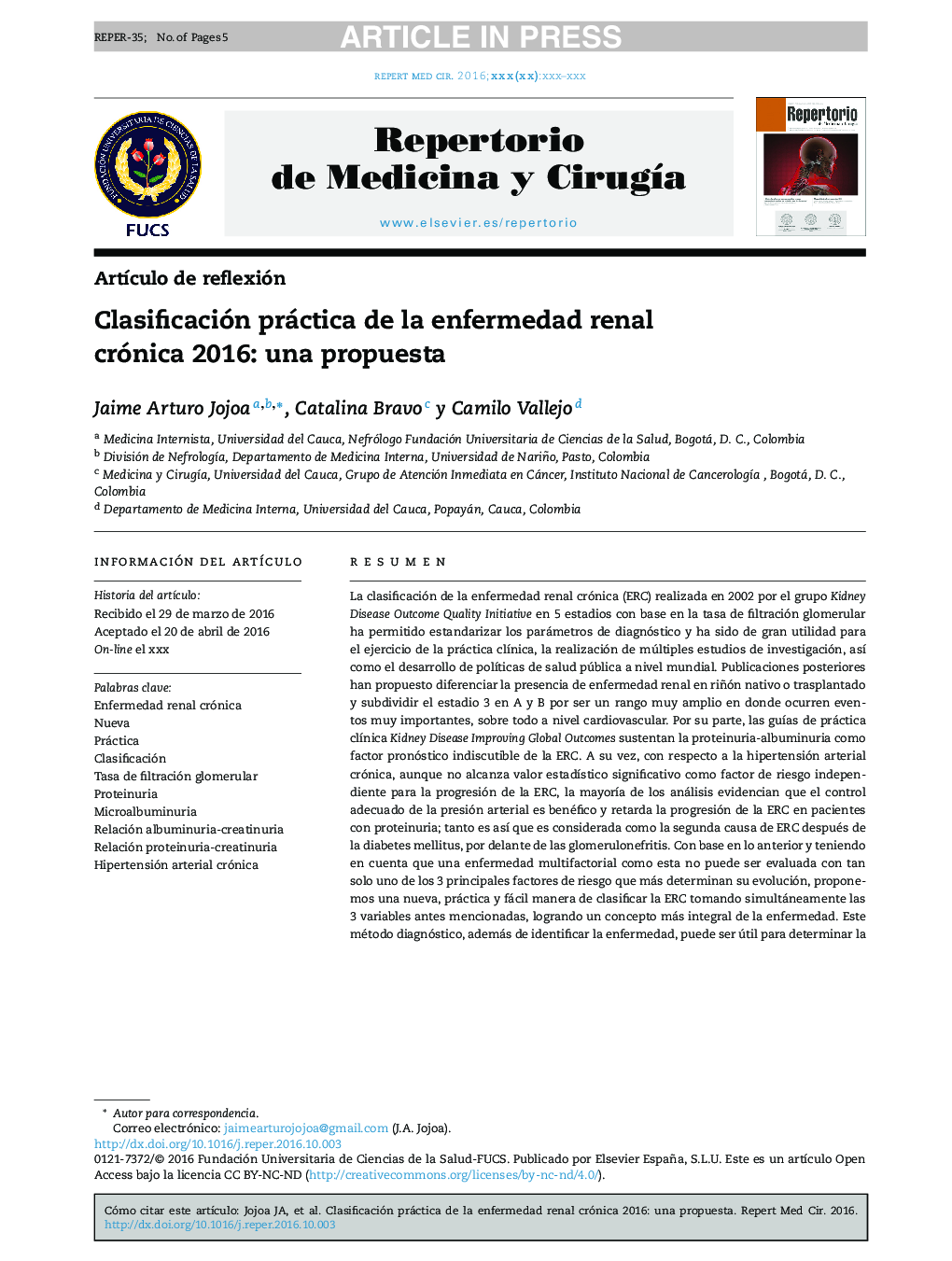| کد مقاله | کد نشریه | سال انتشار | مقاله انگلیسی | نسخه تمام متن |
|---|---|---|---|---|
| 8696018 | 1582024 | 2016 | 5 صفحه PDF | دانلود رایگان |
عنوان انگلیسی مقاله ISI
Clasificación práctica de la enfermedad renal crónica 2016: una propuesta
ترجمه فارسی عنوان
طبقه بندی عمل بیماری مزمن کلیه 2016: یک پیشنهاد
دانلود مقاله + سفارش ترجمه
دانلود مقاله ISI انگلیسی
رایگان برای ایرانیان
کلمات کلیدی
بیماری مزمن کلیه، جدید تمرین طبقه بندی، نرخ فیلتراسیون گلومرولی، پروتئینوری، میکروآلبومینوری، نسبت آلبومینوری-کراتینوریا، نسبت پروتئینوری- کراتینوریا، پرفشاری خون شریانی مزمن، بیماری مزمن کلیه، جدید
Protein-creatinine ratioEnfermedad renal crónica - بیماری مزمن کلیهchronic kidney disease - بیماری مزمن کلیویPractice - تمرینNew - جدیدClassification - طبقه بندیClasificación - طبقه بندیHigh blood pressure - فشار خون بالاmicroalbuminuria - میکروآلبومینوریGlomerular filtration rate - نرخ فیلتراسیون گلومرولیtasa de filtración glomerular - نرخ فیلتراسیون گلومرولیalbumin-creatinine ratio - نسبت آلبومین-کراتینینProteinuria - پروتئینوری
موضوعات مرتبط
علوم پزشکی و سلامت
پزشکی و دندانپزشکی
مراقبت های ویژه و مراقبتهای ویژه پزشکی
چکیده انگلیسی
The classification of chronic kidney disease (CKD), made in 2002 by the Kidney Disease Outcome Quality Initiative group, includes 5 stages based upon the glomerular filtration rate. This has led to the standardisation of diagnostic parameters, and has been of great use in clinical practice, carrying out multiple research studies, as well as developing public health policies at a world level. Later publications have proposed differentiating the presence of kidney disease in a native kidney or in a transplanted one, and subdividing stage 3 of CKD into A and B, since there is a wide range of disease in which very important events occur, especially at a cardiovascular level. Furthermore, the Kidney Disease Improving Global Outcomes clinical practice guidelines support proteinuria-albuminuria as an undebatable prognostic risk factor of CKD. At the same time, and regarding chronic high blood pressure, while it does not have significant statistical value as an independent risk factor for the progression of CKD, the majority of analyses suggest that adequate control of blood pressure is beneficial and delays the progression of CKD in patients with proteinuria, so much so that it is considered the second cause of CKD after diabetes mellitus and above glomerulonephritis. Based upon what has been mentioned, and taking into account that a multifactor disease like CKD cannot be evaluated with only one of 3 principal risk factors that most determine its outcome, a new, practical, and easy method for the classification of CKD is proposed, taking into account all the 3 aforementioned variables, thereby achieving a more integral concept of the disease. This diagnostic method to identify the disease may also be useful for determining the severity as well as predict the risk of progression. At the same way, having quantifiable parameters can be very useful as a prospective follow-up tool for therapeutic interventions.
ناشر
Database: Elsevier - ScienceDirect (ساینس دایرکت)
Journal: Repertorio de Medicina y CirugÃa - Volume 25, Issue 3, JulyâSeptember 2016, Pages 192-196
Journal: Repertorio de Medicina y CirugÃa - Volume 25, Issue 3, JulyâSeptember 2016, Pages 192-196
نویسندگان
Jaime Arturo Jojoa, Catalina Bravo, Camilo Vallejo,
